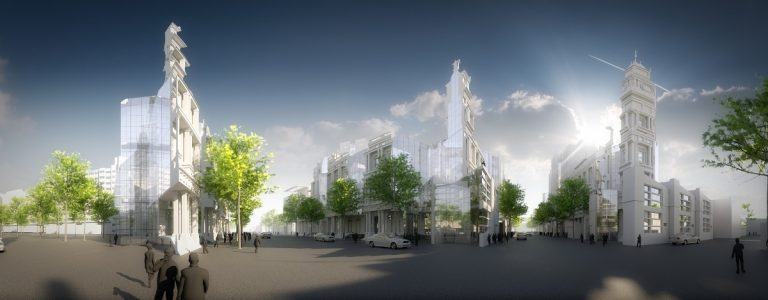
“Architecture is a visual art and the buildings speak for themselves.” – Julia Morgan
From the 18th to the 31st March 2017, the most prominent architects, planners and designers from the Asia-Pacific (APAC) region came together in Brisbane at the Asia Pacific Architecture Forum (APAF). Formed as a unique collaboration between the industry’s most influential figures, the APAF represents the ideal platform for the region’s best and brightest, allowing them to dig deep and explore their role in constructing a global, connected future.
“The Asia Pacific is experiencing unprecedented urban growth,” the Forum website notes, referencing the 2.7 percent annual rise recorded in recent years. “Architects, designers and planners have a critical role in shaping the future of the region, responding to the diversity of its people and countries,” it adds. “Through exhibitions, installations, symposia, lectures and workshops, the Asia Pacific Architecture Forum explores the opportunities and challenges of the Asian century… [and promotes] architecture’s pivotal role in the culture, sustainability and economy of the region.”

Source: Shutterstock
According to UN figures, the urban population of the APAC region is expected to reach 1,970 million, or 46 percent of its projected total of 4,298 million, by 2020. The same data predicts that by 2025, most of the APAC’s population will reside in urban dwellings. Architects, planners and designers alike – including those who gathered at Brisbane’s recent Forum – are responding to these needs with efficiency and prowess, building the modern mega-cities that match 21st century demand.
“Sustainable building is becoming much more than a ‘nice-to-have’ label for new developments in [the] Asia Pacific; it’s rising up the agenda in terms of how buildings are designed and run to help cities keep pace with the pressures resulting from urbanisation,” the Real Views news site writes.
As the most environmentally-conscious generation that has ever lived, the future of architecture in the APAC and beyond must be as sustainable as it is inherently practical. Sustainable principles have evolved from seemingly ‘trendy’ and little-known concepts into fully-fledged global obligations, to which thanks is owed to hard working, international millennial. The promise of world-class academics and reputed professionals is no longer enough for the budding architect to invest; instead, they seek a comprehensive package that blends challenging, rigorous and globally-relevant content, but that equally considers affordability and sustainability, alongside other contemporary ideals.
Would you like to build the cities that house, educate and inspire future generations? Here are 4 APAC leaders of Architectural education that will guide you towards success…
SCHOOL OF COMMUNICATION & DESIGN, RMIT UNIVERSITY VIETNAM
As a multidisciplinary, design-focused institution in the heart of the APAC region, the School of Communication & Design at RMIT Vietnam is a powerful agent of change in an increasingly complex world. Inspiring consistent cultural engagement, creative experimentation, intellectual scholarship and above all, varied global and local perspectives, the School is producing best design professionals in the region.
Shaped by the concepts of quality and differentiation, this year will see the launch of the School’s brand-new Master of Architecture – an innovative postgraduate program that combines design experimentation with real-world practice. In this advanced two-year program students are taught by award-winning architects and globally-qualified academics, collaborating on projects with local, regional and international partners.

Image courtesy of RMIT University Vietnam
The core of the program focuses on developing advanced conceptual, formal and communication skills through constant experimentation and engagement with practice. RMIT has a longstanding reputation for producing highly accomplished Architectural graduates who go on to lead award-winning practices locally and globally. Indeed the ultimate goal of the program is to help shape the future profession, encouraging innovative approaches to practice and engaging the broader community in a critical discussion of Architecture’s role in sustainable, liveable and vibrant cities. The new program is based at RMIT’s Vietnam’s historic campus in the heart of Ho Chi Minh City, with extensive facilities also available the Saigon South campus. Here students can experiment with virtual and physical modelling in a state-of-the-art Mixed Reality Lab or research design at one of the most impressive English-language design libraries in Southeast Asia. As the only design-focused and practice-based postgraduate architecture program in the region, RMIT is filling a growing gap between the academy and the industry.
As Asian cities rapidly urbanise the need for more and more highly-qualified design professionals is increasing. “The urban context of Vietnam is unique, fast-paced, and full of colours, sounds, smells, patterns and liveliness,” says Thong Huynh, Master of Architecture graduate from RMIT’s Melbourne campus. “This, together with the diversity in cultural background, will give RMIT Vietnam students inspiration in design thinking, and a great source of materials and ideas to explore.”
FACULTY OF ARCHITECTURE, THE UNIVERSITY OF HONG KONG (HKU) – HONG KONG
Ranked 11th in the world for Architecture in the most recent QS World University Rankings, students of this specialised Faculty at HKU are guaranteed an outstanding education. With the recently re-launched HKUrbanLab, combining researchers from architecture, conservation, construction and real estate, landscape, urban planning and design, the Faculty of Architecture at HKU is known to be an elite centre of excellence in this type of focused study.
“Having been training Hong Kong and the regions’ architectural leaders for over 60 years, we now provide undergraduate, masters and doctoral education across the built environment subjects…” Dean Chris Webster notes. “Our 1,300 students are taught by some of the very best teachers, researchers and professionals in the world,” he adds, highlighting the internationally-relevant expertise on offer at HKU.
Here, students learn the art and science of their trade in and outside of the classroom environment, honing the skills that will let them progress virtually anywhere around the globe. Home to influential social scientists, architectural historians, urban theorists, sustainability scientists and beyond, the Faculty of Architecture at HKU pushes boundaries that structure our world.

Source: Shutterstock
SCHOOL OF ARCHITECTURE AND PLANNING, THE UNIVERSITY OF AUCKLAND – NEW ZEALAND
Ranked 44th in the world for the quality of its Architectural education, Auckland’s School of Architecture and Planning is New Zealand’s preeminent provider of specialised tertiary study in this field. Delivered by committed and experienced staff, while complemented by cutting-edge digital and technical resources and unparalleled industry links, these programs open up a world of creative endeavour for students of every level.
With the option to tailor courses of study towards a particular career, advanced research route or independent practice project, the School plays host to a comprehensive course offering that undoubtedly caters for all. Here, students have round-the-clock access to state-of-the-art digital studios, technical workshops, audio-visual equipment, computer labs, a drawing archive and a digital fabrication laboratory, allowing them to develop competence in the tools that can propel them to the top of a complex professional sphere.
“Our students have the opportunity to engage with leading scholars, as well as professional and creative practitioners in New Zealand, the wider Pacific and around the world,” says Professor Diane Brand, Dean of Auckland’s Creative Arts Faculty. “Our Faculty enjoys relationships with a number of respected academic institutions and professional organisations, and many of our students participate in community-based events, international performances, competitions, and academic and professional conferences.”
FACULTY OF THE BUILT ENVIRONMENT, UNIVERSITY OF NEW SOUTH WALES (UNSW) – AUSTRALIA
UNSW Built Environment is known to produce global leaders in architecture, planning and construction. Perfectly combining exceptional research with knowledge and first-rate practice, UNSW prepares students for rewarding careers in architecture on all four corners of the globe.
With courses in Architectural Studies, City Planning, Computational Design, Construction Management and Property, Industrial Design, Interior Architecture, Landscape Architecture and beyond, there’s nothing the creative and design-minded individual can’t achieve with UNSW Built Environment. The Faculty’s major strength lies in its continuing diversity, not just in its program portfolio, but also in its selection of staff, many of whom boast distinguished academic on top of esteemed professional credentials.
“Our teaching combines theory, knowledge and practical learning,” says Professor Helen Lochhead, Dean of UNSW’s Faculty of the Built Environment. “Our teachers prepare you for your career by working on projects provided by industry…We provide you with project-based learning experiences developed from briefs relevant to and provided by industry,” the Dean concludes. “Our strong link with industry ensures you learn up-to-date and relevant skills needed to meet the challenges of the built environment.”
*Some of the institutions featured in this article are commercial partners of Study International
Liked this? Then you’ll love these…
Shape the world through a degree in architecture and design
Structuring our cities: 3 of the UK’s most innovative providers of architectural education







